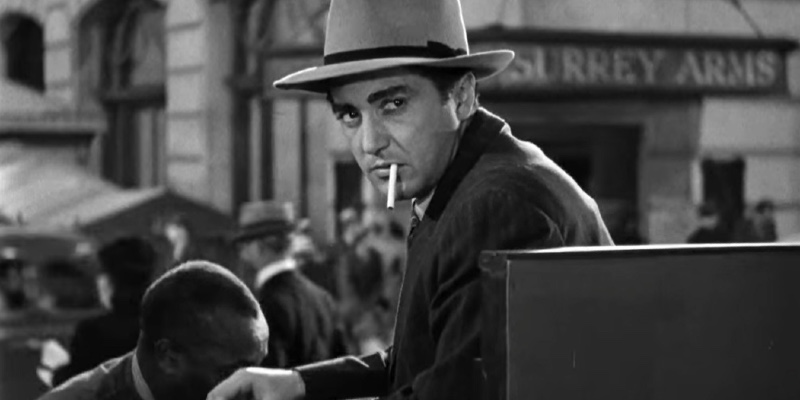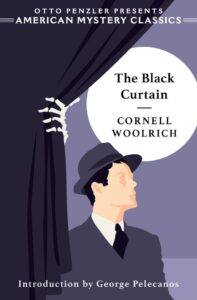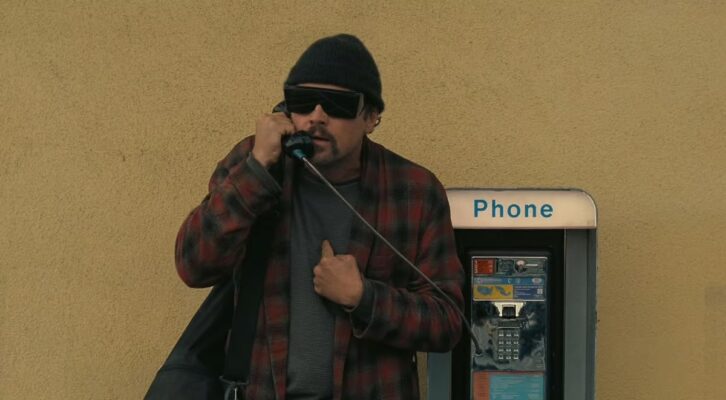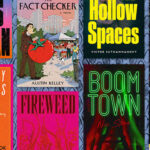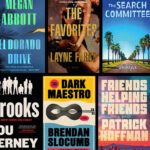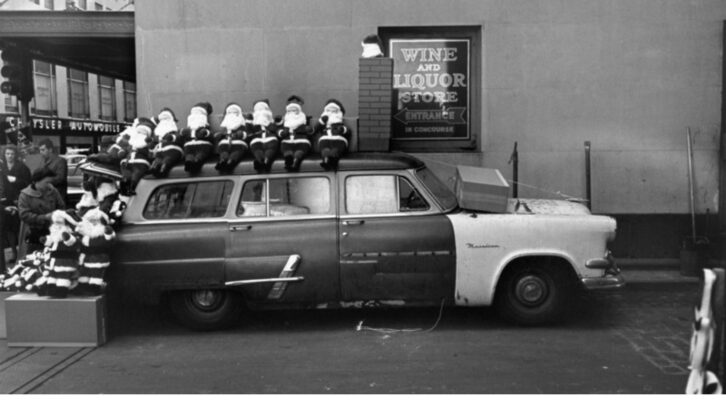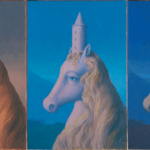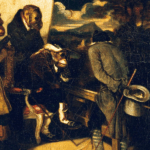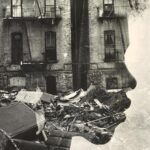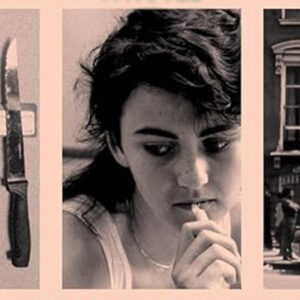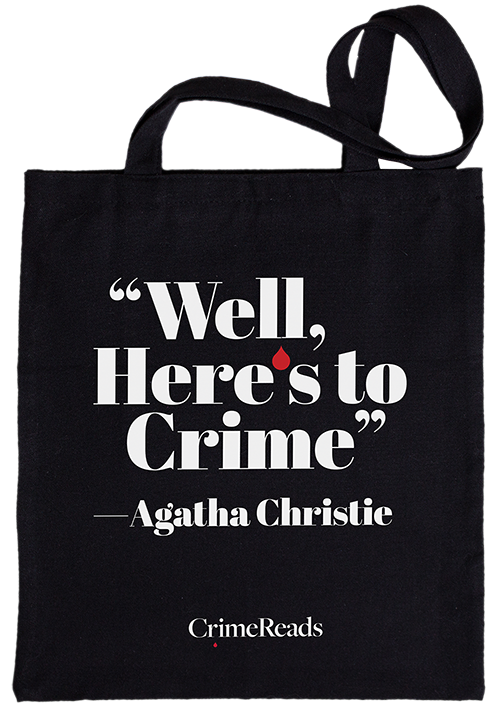Cornell Woolrich was a worker. He produced a large amount on the printed page in a relatively short window of time. He wrote, by my count, twenty-seven novels and countless short stories in various genres, which were later compiled in numerous collections. The books and stories were a natural source for the movies, as their plots neatly fit the mold of three-act screenwriting: conflict, deeper conflict, and resolution. There were forty-three (!) feature films made from his books and short stories, which ultimately made him a very wealthy man, an unusual outcome for a writer who toiled in the pulps.
The most famous of the films mined from the Woolrich library is probably, and deservedly, Hitchcock’s Rear Window (1954), adapted from the Woolrich short story “It Had to Be Murder.” There were other very good ones: The Leopard Man (directed by Jacques Tourneur, 1943); The Chase (directed by Arthur Ripley, 1946); the underrated I Wouldn’t Be in Your Shoes (directed by William Nigh, 1948); and The Window (directed by Ted Tetzlaff, 1949).
Street of Chance (1942), a passable picture directed by Jack Hively and starring Burgess Meredith and noir mainstay Clair Trevor, was adapted from The Black Curtain, the book you hold in your hands. There were Woolrich-inspired films by Indian and Japanese directors, and one from Italian Giallo/horror/Eurocrime practitioner Umberto Lenzi (Seven Blood-Stained Orchids, 1972). Rainer Werner Fassbinder directed Martha (1974); Francois Truffaut directed The Bride Wore Black (1968) and Mississippi Mermaid (1969). For a Hitchcock acolyte, Truffaut made surprisingly dull suspense films, but it should be noted, if it’s to your taste, that The Bride Wore Black’s premise inspired Quentin Tarentino’s Kill Bill. My favorite Woolrich movie adaptation is Robert Siodmak’s Phantom Lady (1944), a delirious high-water mark of film noir.
What of the books?
Woolrich started his writing career with Fitgerald-inspired, Jazz Age novels that were sold in numbers and well received. This sent him out to Hollywood for a shot at screenwriting. The Depression ended the market for Roaring Twenties lit and Woolrich turned to mystery/suspense fiction. He was prolific from 1940–1960, so prolific that he was compelled to publish under other names (my hardback edition of Phantom Lady, under Collier’s Front Page Mysteries imprint, carries the pseudonym William Irish on its spine). The Black Curtain was the second of Woolrich’s six novels with “Black” in the title, which is a tipoff to the darkness of the work.
Can Woolrich be described as a noir novelist? He was among them, though I don’t think he (or anyone else) invented the form. Noir rose up simultaneously, perhaps unconsciously, amongst other arts. It’s there in German Expressionist films and design, it’s in Edward Hopper paintings, in jazz music (through association), in literature. Though Boris Ingster’s The Stranger on the Third Floor (1940) is usually credited as the first film noir, mainly because of its expressionistic nightmare sequence, I’d put Fritz Lang’s M (1931) in the running as well. The point being, there were no “firsts” in noir.
The Black Curtain was published in 1941, before anyone knew what noir “was” (it took the French to put a label on it, years later). Yet, deliberate or not, Woolrich wrote in a style that was very precise in conveying anxiety, fear, claustrophobia, and the inevitability of fate, elements that were to become the emotional core of the genre and would be conveyed by film directors with visual style in a distinct blend of lighting and effects. In Woolrich’s later books, there is evidence that he was being influenced by the visual signposts of film noir (venetian blind shadows, etc.), but at this stage in his career, perhaps inadvertently, he was creating something new. Even as early as The Black Curtain, he equated fractured illumination with impending violence, as in the “blades of light” that divided a space or the way light “knifed” its way into a room.
From The Black Curtain:
Townsend stood there by the tree, watching her down the leafy alley. Now the disks of sunlight didn’t gently alternate down on her; they streaked in one continuous, blurred line like a striped tiger pelt, she was running so fast.
At times in The Black Curtain, one can sense that Woolrich was writing in a fever, manifested in his staccato prose. The rhythm maintains the anxiety and works to great effect:
The door seemed to explode with impacts. It made the light bulbs jitter in the ceiling. It made a pottery thing on table sing out with the vibration, carried to it along the floor and up the table legs. It was an earthquake of an attempted forcible entry. It was violence in its most ravening form. It was the night gone hydrophobic at their threshold. It was disaster. It was the end.
Much has been made of Woolrich’s tortured life and how it spills onto the pages, like blood from a freshly opened wound, of his work. There are some facts backed up by interviews of his friends and editors: He was an odd-looking man, pale and small. He had one brief marriage that fell apart and thereafter lived in low-grade residences with his mother in New York City. He rarely left his apartments and was probably agoraphobic (fear of the marketplace, from the Greek). He suffered from thanatophobia (fear of death, from the Greek, just saying). He was an alcoholic. When his mother passed away, his life spiraled downward and his health rapidly declined. Towards the end, one of his legs was amputated due to gangrene left unattended. He died with nearly a million dollars in the bank (from the movie money, a fortune in 1968), which he willed to Columbia University for a scholarship fund for writing students in honor of his mother. Did any of these things make their way into his fiction? Probably, in the same way that a writer’s psyche always makes its way into the fiction.
As for his rumored queer life and his infamous sailor suit, much as been made of it, and I’m not sure why. It’s never been proven, nor has it been confirmed that his marriage was never consummated. His private life was his, and for me it has no relevance to his work.
I’m content to read the books and not overanalyze the man behind them. Woolrich’s output was, frankly, uneven. But when the author was creatively locked in, his books and short stories were terrific. The Black Curtain is a crackling good mystery/suspense novel. I’m pleased to own this new edition for my collection. I think you will be, too.
George Pelecanos
Silver Spring, MD
May 2024

